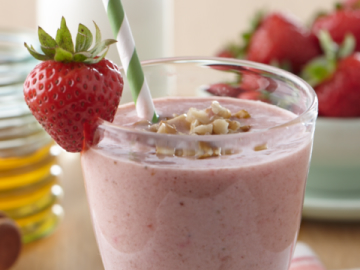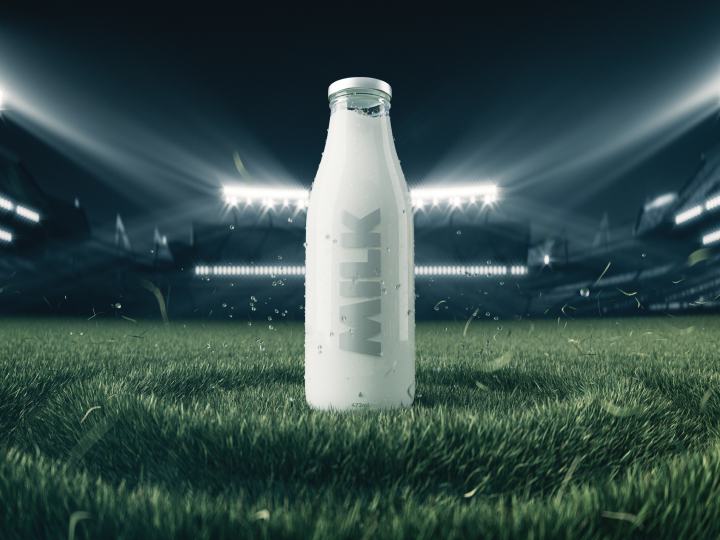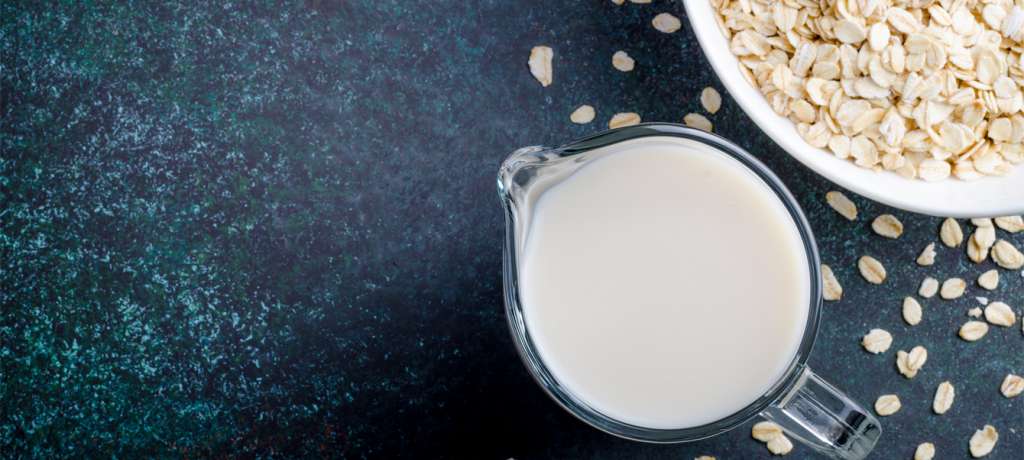Milk Vs. Soy Milk
From grocery budgets and picky eaters to nutrition, balancing family mealtime with nutritious options can be a juggling act. When you think about all your different choices, like selecting soy milk or cow’s milk, it’s important to make good eating decisions to help you lead by example. Teaching your kids about good nutrition when they’re young has lifelong health benefits.
With so much nutrition information on the web, your social feeds and in your favorite celebrity’s diet books, it can be difficult to know which type of milk to serve to your family. When it comes to making that decision, clear, upfront information about all of the options—from milk to non-dairy milk alternatives—can make it easier.
You may have heard a lot of discussion about soy milk vs. milk, which may make you wonder if soy milk is healthier than “regular” milk. While some moms eliminate dairy because their kids are allergic to it or lactose intolerant, other moms ditch dairy for themselves and their kids for alternative reasons. The fact is unless there is a milk allergy, eliminating dairy milk may not only be unnecessary, it could also impact diet and health, according to the experts.
How Does Soy Milk Nutrition Differ from Dairy Milk?
If you ask, “Is soy milk healthy?” or “Is soy milk good for you?” you’ll see that while soy milk is a good source of protein, there are differences between the kinds of protein in soy milk and dairy milk. According to the British Journal of Nutrition, dairy milk proteins rank as some of the highest quality proteins available, especially compared to plant-based proteins like soy and pea protein. A protein’s quality indicates how easily it can be digested and used in our bodies.
When looking at soy milk vs. milk, consider that while soy milk does have nutritional benefits, the nutrients are not the same as cow’s milk. In fact, few non-dairy milk alternatives can match the full nutrient package found naturally in milk, which includes calcium, potassium and B vitamins. Soy milk has added calcium, vitamin A, vitamin D, riboflavin and vitamin B12, but it does not offer the same nutritional value as dairy milk, which has 13 essential nutrients.
Made from soybeans and filtered water, soy milk also contains added ingredients, including sea salt, sugar, natural flavors and thickeners like gellan gum. Thickeners are added to improve consistency and shelf life of soy milk and many other plant-based milk alternatives. Non-dairy milk alternatives, including soy milk, are often fortified with these nutrients and have different nutrient amounts.
Take a look at how an 8-ounce serving of each beverage1 compares:
Original Soy Milk
- Calories: 100
- Protein: 7g
- Total Sugar: 6g
- Added Sugar: 5g
- Nutrients† (% of Daily Value): vitamin B12 (130%)*, calcium (35%)*, vitamin D (15%)*, riboflavin (35%)*, protein (12%), vitamin A (15%)*, magnesium (10%)
- Ingredients††: Soymilk (filtered water, soybeans), sugar, calcium, vitamin A, vitamin D, riboflavin, vitamin B12, sea salt, natural flavor, gellan gum
Dairy Milk (Lowfat)
- Calories: 100
- Protein: 8g
- Total Sugar: 12g
- Added Sugar: 0g
- Nutrients† (% of Daily Value): calcium (25%), vitamin D (15%)*, phosphorus (20%), riboflavin (35%), vitamin B12 (50%), protein (16%), vitamin A (15%)*, niacin (15%)**, pantothenic acid (20%)
- Ingredients††: Milk, vitamin A, vitamin D
- 1U.S. Department of Agriculture, Agricultural Research Service. 2016. USDA National Nutrient Database for Standard Reference, Release 28 and supplemented with nutrition information from nationally available brands.
- †Nutrients signify food provides 10% or greater of the Daily Value of labeled nutrients. Nutrients will differ by brand, flavor and fat content as nutrient fortification varies.
- ††Product formulation will differ by brand, flavor and fat content, so ingredients may vary.
- *Indicates nutrient is fortified
- **As niacin equivalents
Is Soy Milk a Dairy Food?
No, soy milk is not a dairy food. So you may wonder why it is listed with other milk and milk products on ChooseMyPlate.gov. This is because the nutrients provided in soy milk are the closest non-dairy milk alternative to milk, so it is included for those who can not or choose not to have dairy milk products. Unless someone has a milk allergy and cannot consume dairy, there is no medical need to eliminate milk from the diet.
The dairy group includes foods made from milk (including lactose-free and lower-lactose milk) that retain their calcium content. This includes milk, cheese and yogurt. While soy beverages contain minimal amounts of natural calcium, they are typically fortified.
Although it is possible to meet calcium intake recommendations without consuming dairy foods, it may be more difficult to meet your calcium requirements without milk and milk products in your diet. Additionally, according to the AAP (page e1231), dairy milk is a great way for kids to get their bone-building nutrients, even more so than non-dairy milks fortified with calcium.
Is Soy Milk Good for You?
As is often the case when it comes to asking nutrition-related questions, the answers are not black and white. All foods, including soy milk, can be part of a healthy diet. Incorporating a variety of fruits, vegetables, whole grains, legumes and other plant-based foods is an important part of healthy eating patterns identified by the Dietary Guidelines.
When you consider the decades of research reinforcing low-fat milk as one of the most nutrient-rich beverages available, choosing to include dairy milk in kids’ diets is a great option and one way to ensure they get the nutrients they need.
Using Soy Milk as a Milk Substitute
Substituting milk with other non-dairy calcium sources, like fortified soy milk or leafy greens, can lead to gaps in other key nutrients like protein, potassium, magnesium, phosphorus, riboflavin, vitamin B12, vitamin A and vitamin D because they don’t provide the same nutrients as milk.
When you consider soy milk vs. milk in your coffee, to pour over your kids’ breakfast cereal, or to use in your favorite recipes that include milk, there are a couple of things to think about. Consider this: The flavor and consistency of soy milk is different from dairy milk. That could change the thickness and texture of dishes like pancakes, oatmeal and smoothies.
At just about 25 cents per glass, dairy milk offers more nutritional bang for your buck than just about any other beverage you can buy, providing thirteen essential nutrients (like 8 grams of high-quality protein) in each 8-ounce glass. Additionally milk has only three ingredients, milk, vitamin A and vitamin D, where non-dairy milk alternatives, like soy milk can have up to 10 added ingredients.
When choosing between a non-dairy milk alternative, like soy milk, and dairy milk—a simple, farm-fresh beverage—the choice is yours. But considering the true differences can help you make an informed decision.
How to Freeze Milk
If you want to save milk for later, you can—just freeze it in small containers (or an ice cube tray) before the expiration date. You’ll notice that milk (and soy milk as well) separates, and that’s completely normal. When you’re ready to use it, let it thaw in the refrigerator. Be sure to give it a quick shake and it’s ready to drink or use in your favorite recipes. If you want to save time in the morning, those frozen milk cubes have many uses, including adding them to your cold-brew iced coffee and smoothie recipes.




